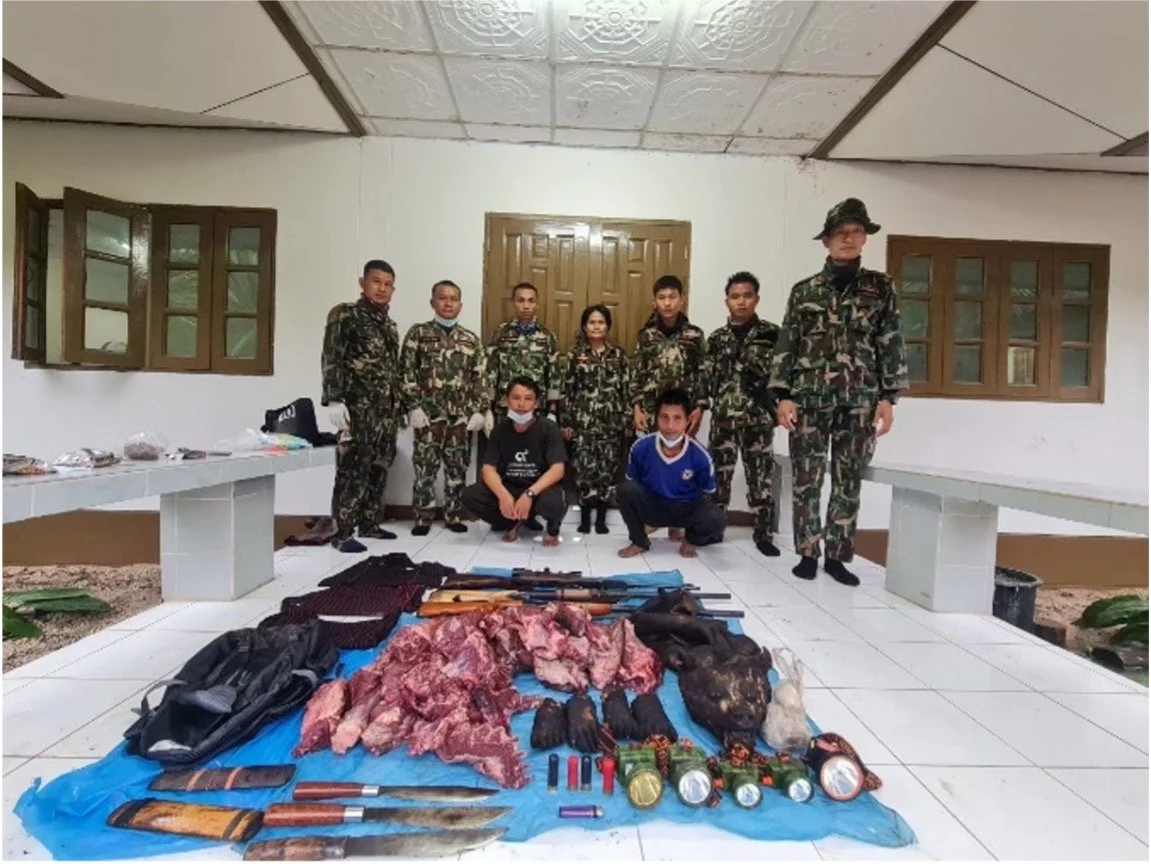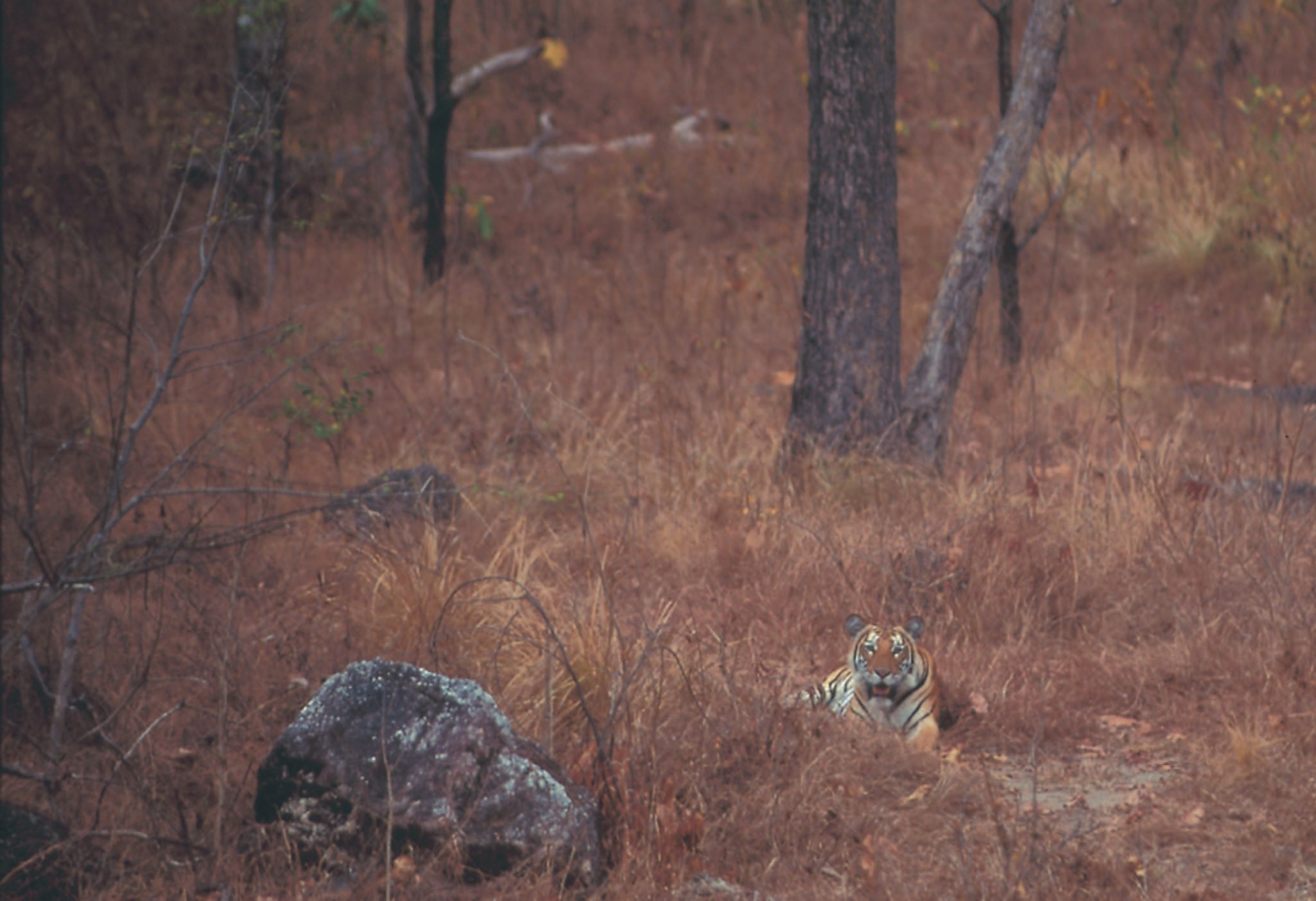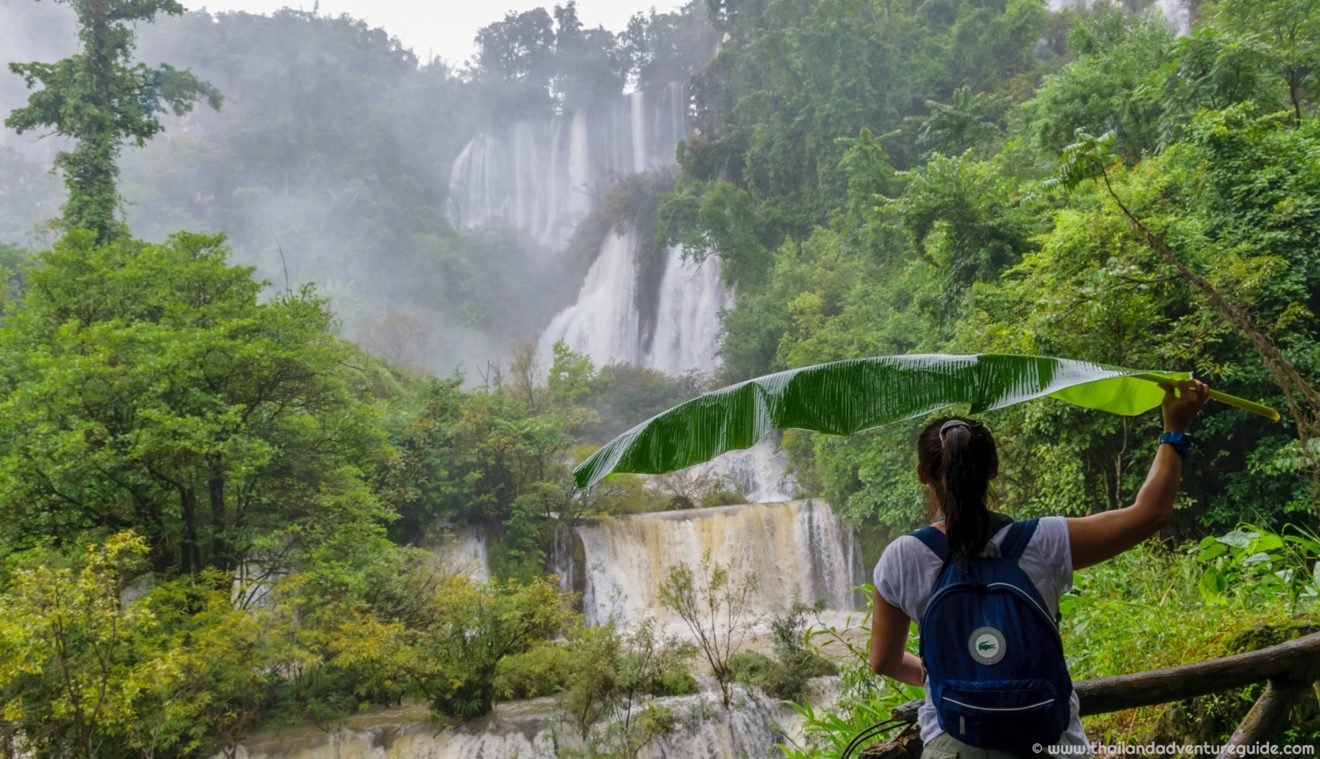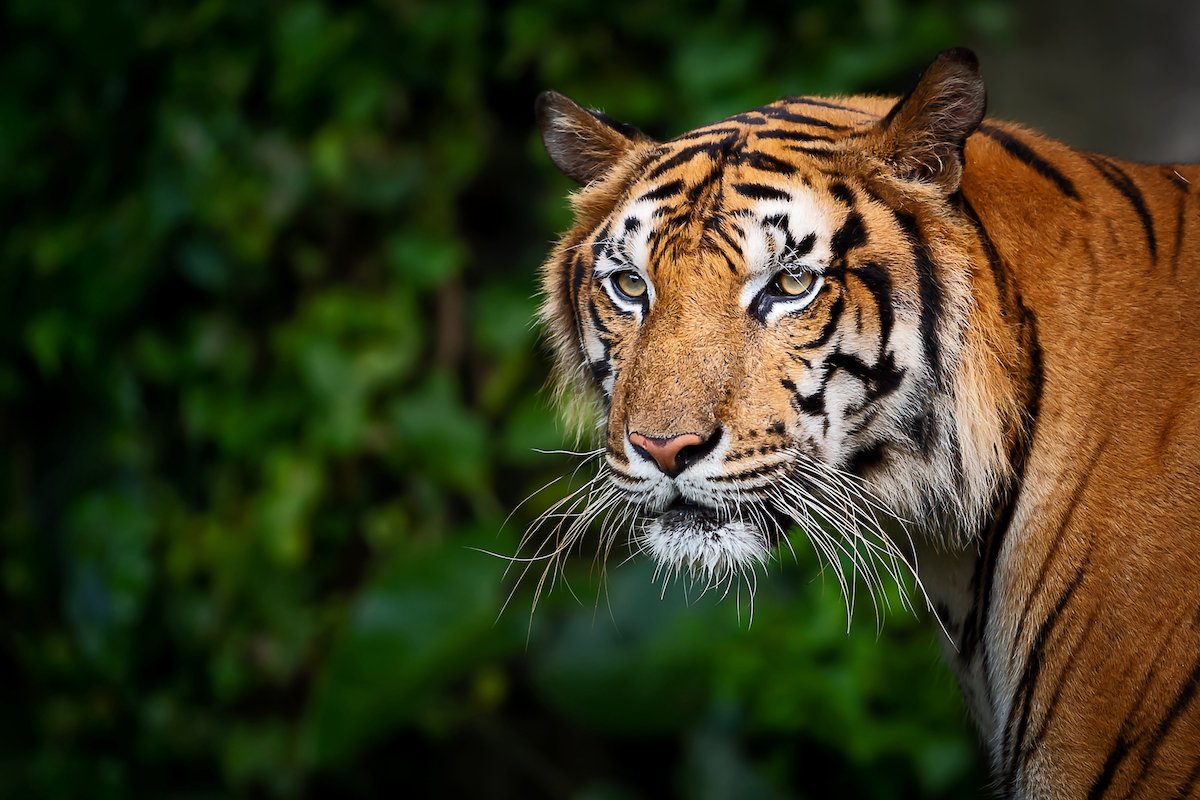Saving Tigers in Thailand: Umphang-Thung Yai 2022-2024 Progress Report
UPDATE:
A revised national wild tiger population estimate of 175-223 individuals has been provided by the Royal Thai Government. The country's wild tiger population has increased, surpassing the previous estimate of 148–189 tigers. This is a major milestone in the history of tiger conservation in Thailand, as it makes the country the first in Southeast Asia to do so.
Due to decades of past poaching and habitat destruction, wildlife populations throughout Asia, especially tigers and their prey, have suffered. Tiger populations have rebounded in Thailand, nevertheless, because to investments and conservation initiatives, especially in the main protected regions of the Western Forest Complex in the country's west.
This GC Project has recently been featured on CNN:
See the Amazing News
Original Post
Introduction and History
One of Global Conservation’s newest projects is a multi-year Global Park Defense deployment in the Umphang and Thung Yai East Wildlife Sanctuaries (UP-TYE) in the Thung Yai-Huai Kha Khaeng UNESCO World Heritage Site (HKK-TY), Thailand. GC is partnering with Wildlife Conservation Society (WCS) Thailand to protect a critical wildlife habitat area of over 120,000 ha for recovery of endangered tigers and large mammals.
HKK-TY as a whole encompasses an area of 640,000 hectares and is the core area of Thailand’s Western Forest Complex (WEFCOM), one of the largest forest landscapes in Southeast Asia. Notably, WEFCOM is one of only two places in Thailand where tigers persist. The other is Thap Lan, where GC and WCS Thailand also collaborate to preserve wildlife.
UP-TYE is now protected by 10 ranger stations and about 60 park rangers, who defend endangered large mammals like tigers, leopards, and Asian elephants from threats like development, illegal logging, and poaching.
Goals and Objectives
WCS's goal is to work closely with the Government of Thailand’s Department of National Parks, Wildlife and Plant Conservation to save endangered wildlife species and its habitat through capacity building and law enforcement strengthening using up-to-date technologies. WCS would also like to speed up the wildlife population recovery process by maintaining large areas of grasslands for ungulates using a prescribed burning technique.
Under these goals WCS has key objectives including:
To strengthen the SMART patrol system in the zone of high potential for tiger and large mammal recovery in Umphang and Thung Yai East Wildlife Sanctuaries.
To strengthen and install anti-poaching cellular camera traps, locally known as the network-centric anti-poaching system (NCAPS) in areas at high risk for poaching in UP-TYE.
To use habitat improvement techniques (e.g., prescribed burning, water hole management, plot samplings for ungulates) to maintain grasslands in abandoned fields to increase food sources for ungulates.
To run a tiger population monitoring system using camera trapping in a high potential zone of tiger and large mammal recovery in UP-TYE.
NCAPs camera captured a poacher with gun (9A and Point # 3 in Figure 6), ranger team arrested 2 poachers with a carcass of Malayan sun bear (Helarctos malayanus), two shot guns and a homemade gun, and various other equipment.
Progress
Objective 1: To strengthen the SMART patrol system in the zone of high potential for tiger and large mammal recovery in Umphang and Thung Yai East Wildlife Sanctuaries.
WCS has made progress in implementing the SMART patrol system. However, due to COVID-19 restrictions during the second half of 2021, they have had to postpone the planned training activities.
Objective 1, Activity 1: To train 35 rangers in UP-TYE in the SMART patrol system.
Due to COVID-19 restrictions on gathering people, WCS has not yet provided training. They plan to conduct the ranger training course on March 4 – 10, 2022.
Objective 1, Activity 2: Support provisions, GPSs, digital cameras, high quality uniforms, field equipment, and other necessary supplies to improve the morale of park rangers and patrol effectiveness.
The equipment will be given during the training course in March 2022.
Patrol rangers found feather of Wreathed hornbill (Rhyticeros undulatus) carcass found poached in Thung Yai East Wildlife Sanctuary.
Patrol effort
In the target area WCS has supported seven patrol teams from TYE. During July to December 2021 the patrol teams have spent about 4 - 5 days per patrol trip with an average of 914.44 km/month, divided into foot patrols at 756.69 km/month, vehicle patrols at 919.33 km/month, and boat patrols at 4.53 km/month.
Threat detection
Most threats were found along the boundary between TYE and UP, because there are various villages and a Burmese refugee camp for located near the boundary. During the reporting period, the patrol teams destroyed 5 poaching camps and one poaching hide. The patrol team did not find tiger prey poaching in this period. Other animals found poached included one lesser mouse-deer (Tragulus kanchil), one binturong (Arctictis binturong), two Phayre’s langurs (Trachypithecus phayrei), and other poached carcasses. They found 6 poachers but could not arrest them.
NCAPs camera caught 2 poachers with a tractor passing the anti-poaching camera trap. UP-TYE rangers later searched and seized the area and found 14 logs with total of 3.88 cubic meters of Burmeses sal (Shorea obtusa). Poachers fled from the scene.
Objective 2: To strengthen and install anti-poaching cellular camera traps, locally known as the network-centric anti-poaching system (NCAPS) in areas at high risk for poaching in UP-TYE.
WCS has focused the set-up of anti-poaching camera traps in Umpang Wildlife Sanctuary due to phone signal availability. The activities and summary are shown below.
Objective 2, Activity 1: Install 5 anti-poaching cellular camera traps in area at high risk of poaching and rotate them regularly.
Objective 2, Activity 2: Support data maintenance costs and analysis for park officers of UP-TYE.
With these two activities above, WCS has set up anti-poaching camera traps in different areas in Umpang. Every month WCS has set up about 5 cellular camera traps in various zones according to information by UMP patrol teams. During this reporting period, WCS has set up 28 cellular camera traps. They have detected 47 incidents of 105 people passing the cellular camera traps. They have successfully arrested 3 cases.
NCAPs caught a poacher with gun. A poacher was arrested by ranger team, found .22 rifle with telescope and 2 Gray-bellied Squirrel (Callosciurus caniceps) carcasses.
Objective 3: To use habitat improvement techniques (e.g., prescribed burning, water hole management, plot samplings for ungulates) to maintain grasslands in abandoned fields to increase food sources for ungulates.
Objective 3, Activity 1: Improve habitat for large herbivores, including providing salt licks and waterholes.
Objective 3, Activity 2: Support research on the habitat selection of wildlife before and after burning.
Objective 3 and the two related activities above have not been fulfilled. During this report period, the area was soaking wet with intensive rainstorms. WCS staff could not reach the sites. They plan to conduct prescribed burning around the beginning of February.
Objective 4: To run a tiger population monitoring system using camera trapping in a high potential zone of tiger and large mammal recovery in UP-TYE.
Objective 4, Activity 1: Placing camera traps at 70 camera trapping points in a 500 sq km sampling area of TYE, which WCS has used for long-term monitoring of tiger populations.
We plan to do this objective and its activity in March to May 2022.
Next Steps
Continue SMART patrol activities in the target area of UP-TYE.
Continue rotating cellular anti-poaching camera traps in high risk areas.
Start control burns in target areas in the middle of TYE in February 2022.
Start camera trapping for tigers in the target area of UP-TYE in March 2022.
Species Facing Extinction
We are supporting Indochinese tiger conservation in Huai Kha Khaeng and Thung Yai World Heritage Site, Thailand.
Only 220 Indochinese tigers remain in the wild, with most of them in Thailand. The Indochinese tiger is a critically endangered population of tiger native to Southeast Asia, though it now only occurs in Thailand and Myanmar.






















